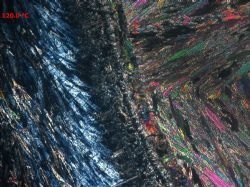 |
| The formation of crystals, magnified--Courtesy of U. of Lincoln |
Materials science is a crucial facet of the drug delivery realm, and researchers in the U.K. and Ireland are rallying to bring attention to the importance of crystallization in the future of drug development and delivery.
Researchers Simon Lawrence of the University College Cork and Nicholas Blagden at the University of Lincoln have formed the Crystallize research network to bring together scientists around the world to increase the understanding of crystallization and the part it is likely to play in the biotech industry, from development and engineering to manufacturing. And drug delivery is a big part of that future, as crystals can help transport small molecules as well as large biologics to help create viable doses from poorly soluble ingredients, according to a report from the University of Lincoln.
The group's aim is to bring about both academic and industrial growth in the area of crystal design and application, particularly in the pharmaceutical realm. They will meet for the first time this month in Marseille, France, to discuss the very nature of crystallization and how molecules form crystals. Harnessing this natural mechanism can lead to important advances in drug delivery down the road.
"The big problem is that we have still got a lot to learn about how crystals actually grow as it's not clear how they change from a liquid to a solid state," Blagden said in a statement. "This is called 'nucleation' and is the first step in crystallisation, determining if a crystal can form from a liquid state. A bigger effort has now begun to understand crystallisation and how it impacts on everything from chemicals to pharmaceuticals. We need to understand this process so we can deal with the bigger problems. It's about sharing advice and experience."
In his own research, Blagden and his team are growing nanocrystals on small plastic chips, looking to produce large volumes of the material for industrial use. Growing these together as a cocrystal with materials such as sugars or vitamins could offer better delivery and more viable doses.
- here's the U. of Lincoln report
Special Report: Nanocrystals- When nanotech meets biotech